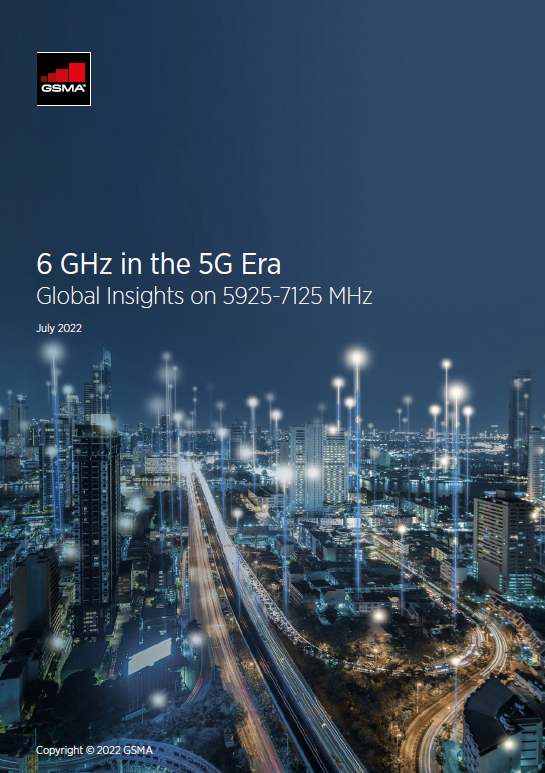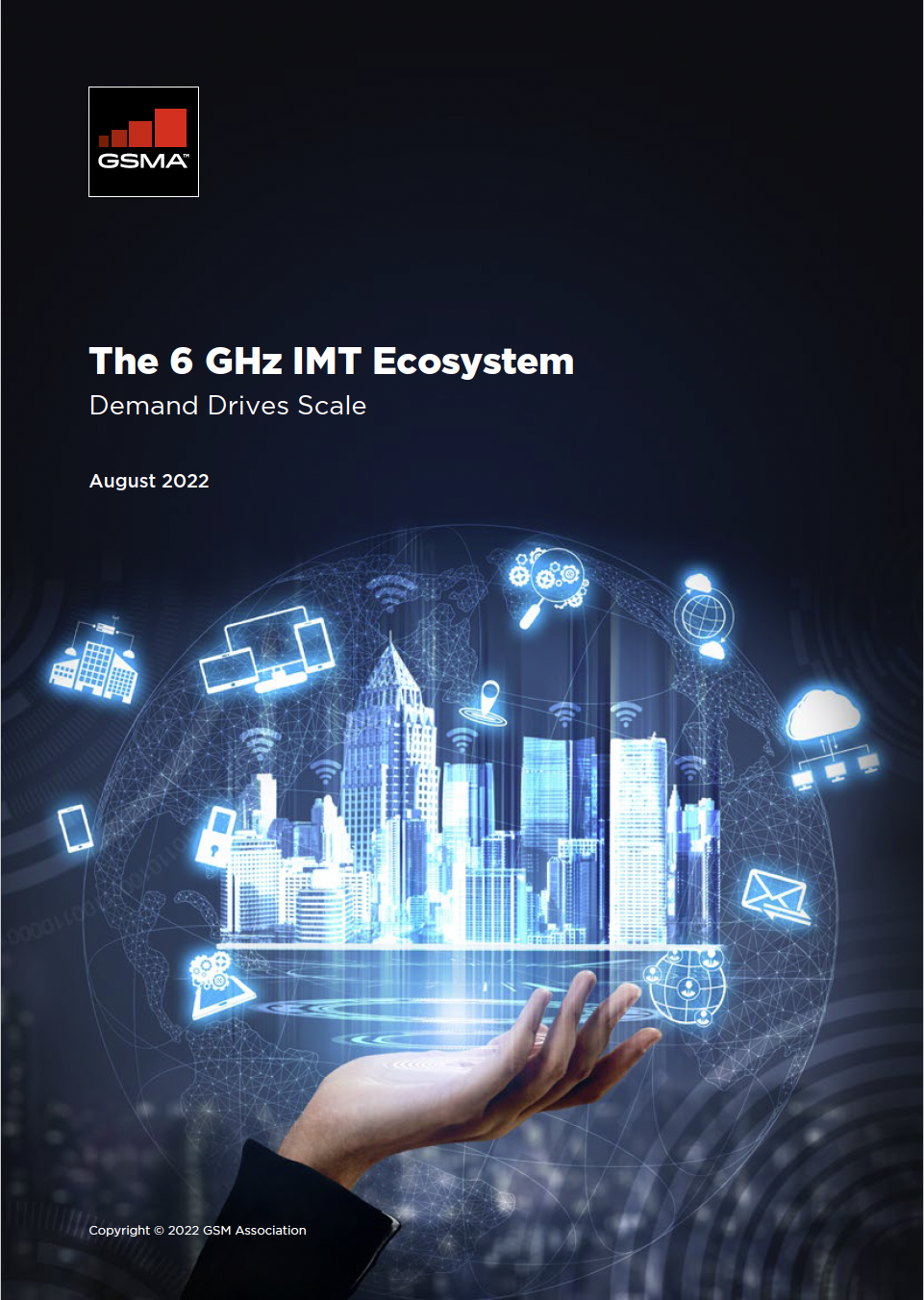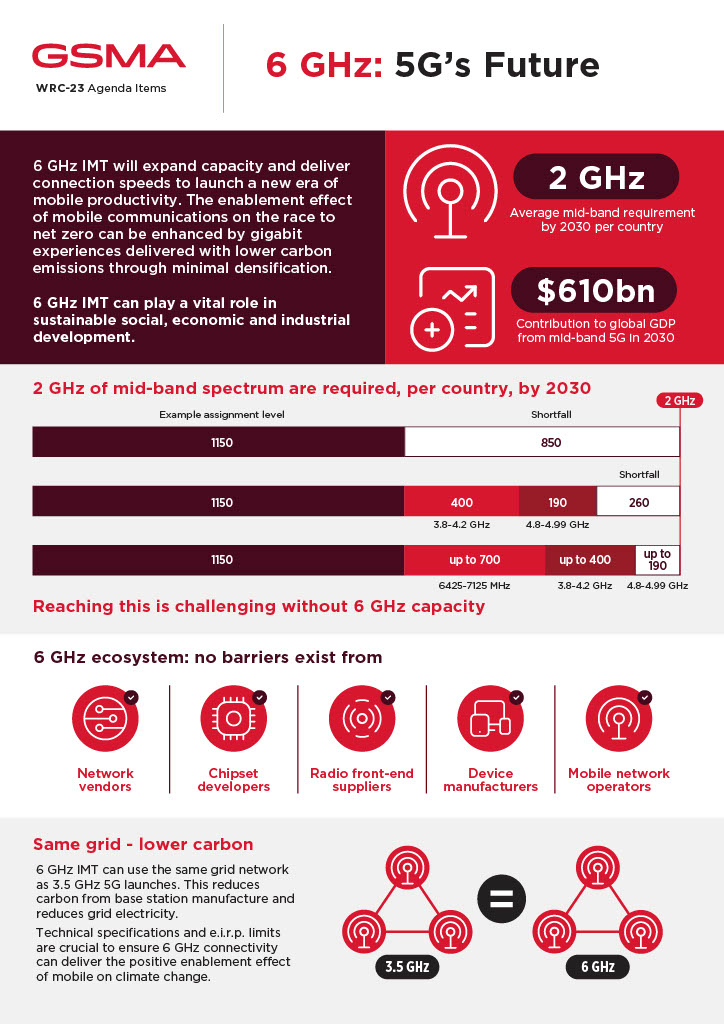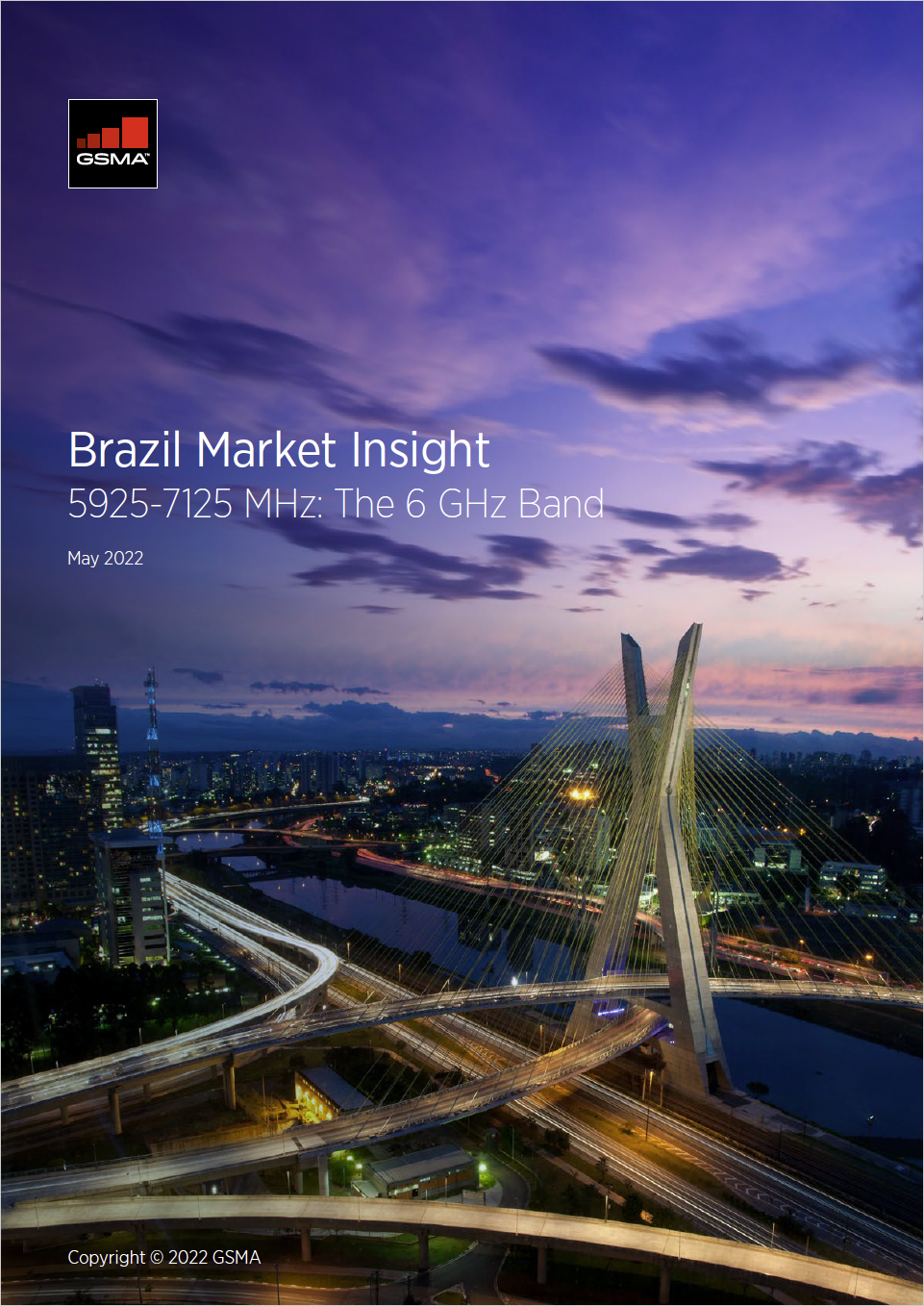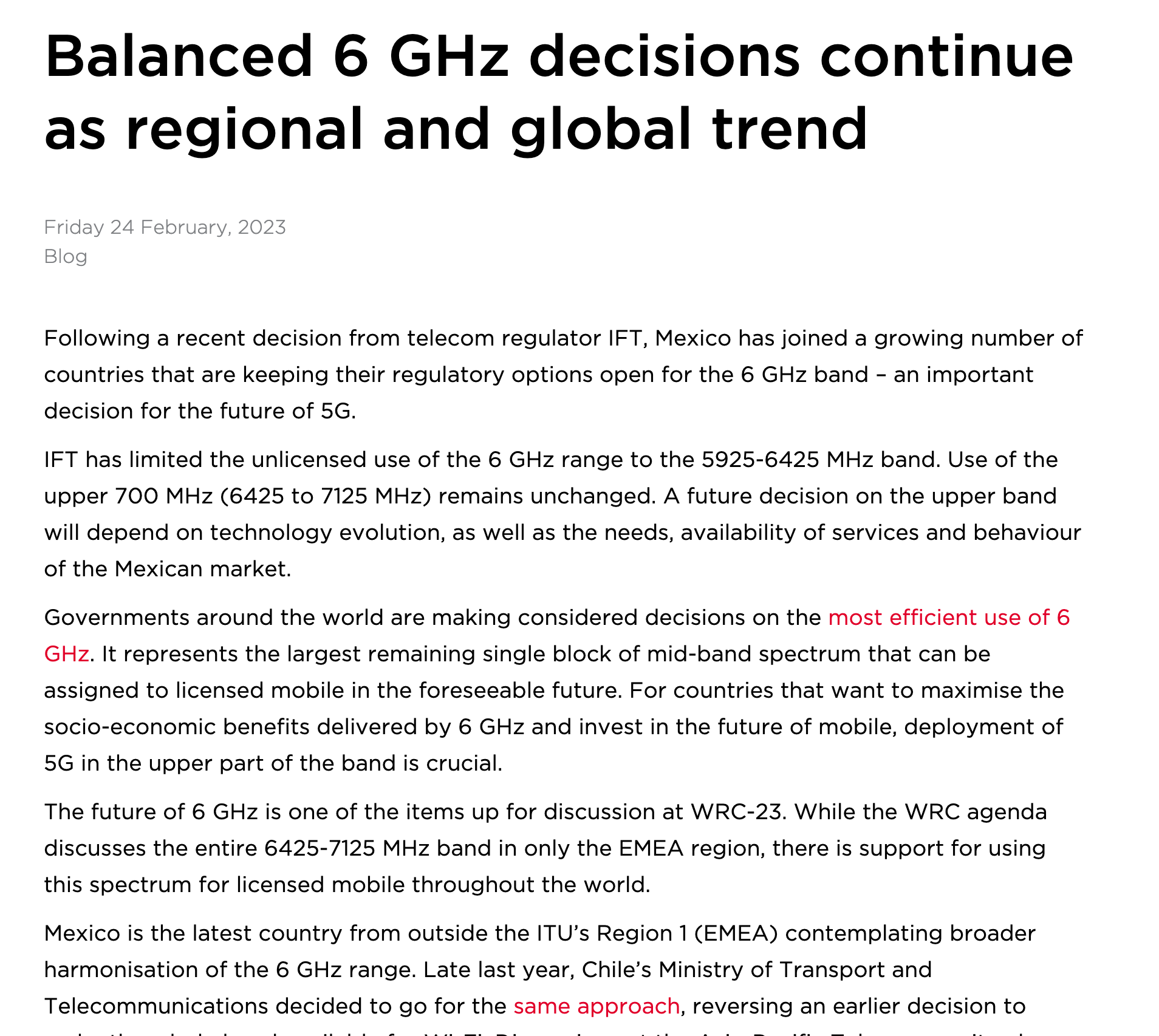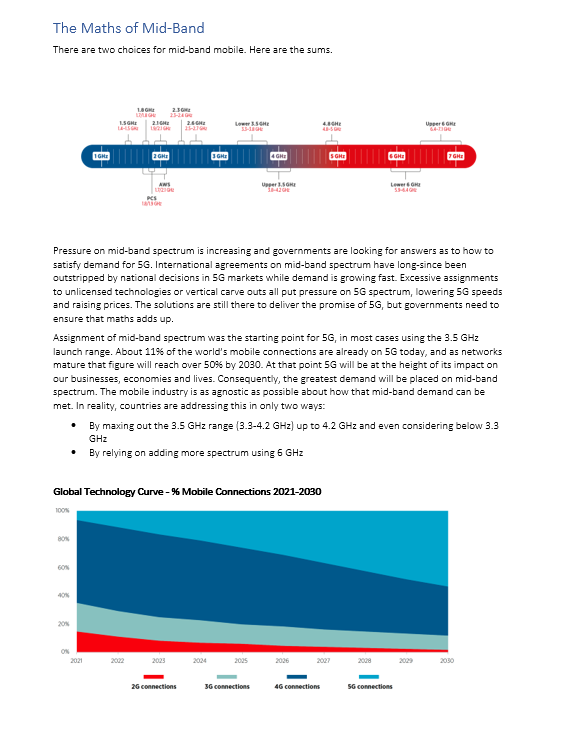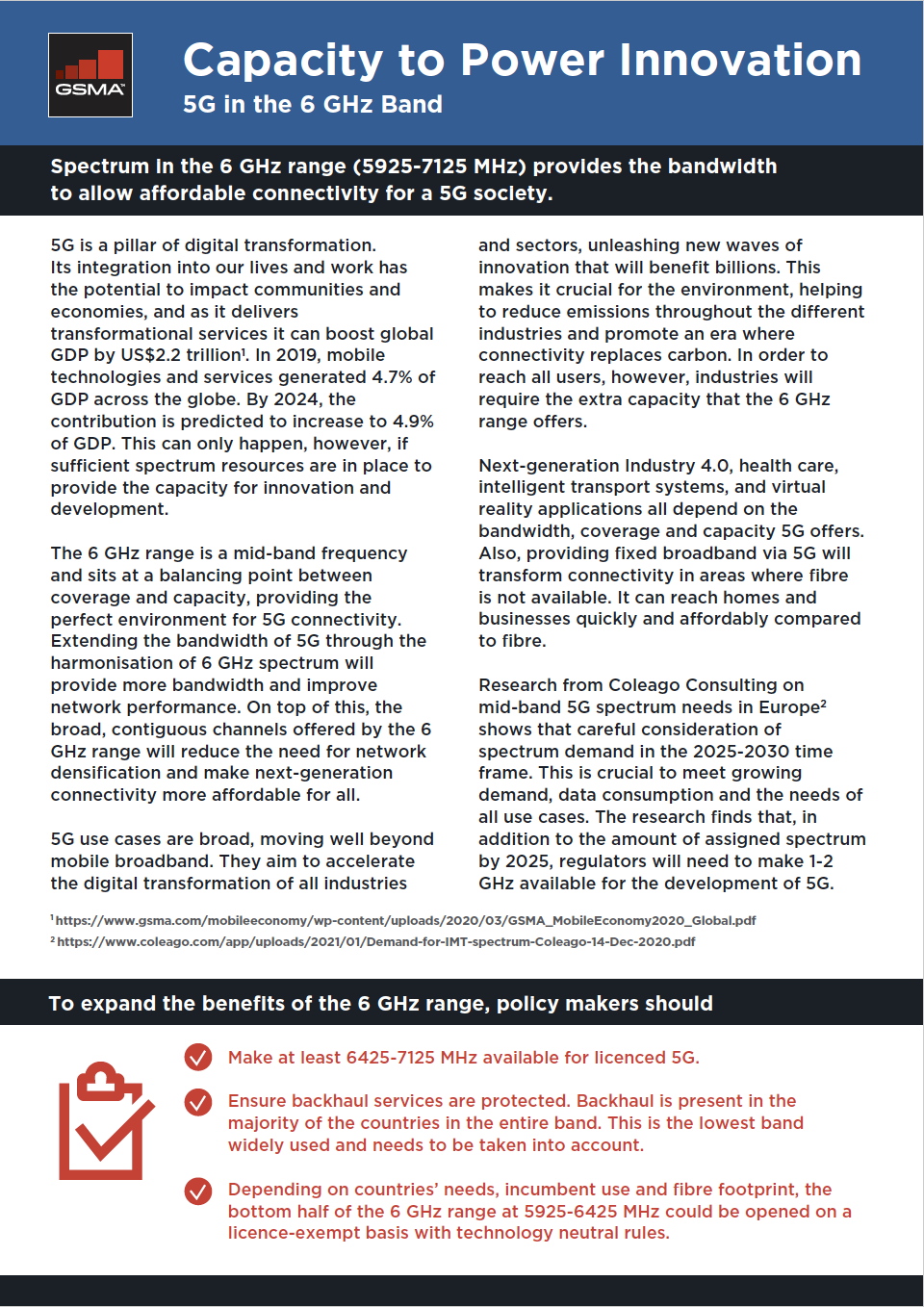6 GHz 5G spectrum can play a central role in sustainable social and industrial development. This section gives guidance on why the mobile industry believes the 6 GHz range is vital to the future of global connectivity.
As enhanced broadband, IoT, data, analytics, and insight permeate every aspect of society, mobile networks will require spectrum capacity plans that are integrated into a long-term vision of each nation’s future.
With its ability to offer high-capacity, city-wide 5G, mid-band spectrum plays a core role in delivering 5G networks all over the world. In fact, mid-band 5G spectrum will deliver more than $610 billion in global GDP in 2030, accounting for almost 65% of the overall socio-economic value generated by 5G, according to research from GSMA Intelligence.
For 5G to flourish, each country needs 2 GHz of mid-band spectrum to meet demand by 2030. This is a challenging goal, but the earliest adopters are starting to move closer to this target in their spectrum roadmaps and through assignments.
Governments around the world need to make a carefully considered decision as to what the most efficient use of 6 GHz spectrum will be. For countries that want to maximise the socio-economic benefits delivered by 6 GHz and invest in the future of mobile, deployment of 5G in the upper 6 GHz band is crucial. This will be supported by an IMT identification at WRC-23 and taking these steps will provide the necessary spectrum capacity to secure 5G innovation and growth.
Research from GSMA Intelligence has found that the outlook for the 6 GHz IMT ecosystem is robust. Importantly, there are no technical barriers to developing, and commercialising, 6 GHz 5G networks. Device and infrastructure solutions can operate in the band, just like any other.
The GSMA’s vision for the 6 GHz band states that:
- Mobile networks will need, on average, 2 GHz of mid-band spectrum per country by 2030. This is challenging to achieve without 6 GHz.
- 6 GHz capacity will be required to meet increasing customer demand at the required speeds of ITU IMT-2020.
- Mobile networks are already highly densified, but 6 GHz can enable the growth of sustainable 5G capacity on existing sites.
- Timely availability of 6 GHz, at reasonable conditions and price, will drive cost-efficient network deployment, help lower the broadband usage gap and support digital inclusion.
Therefore, according to market demand:
- The GSMA recommends that at least 6425-7125 MHz is made available for licensed 5G by 2030.
- 5925-6425 MHz should be considered for licensed 5G, or licence-exempt on a technology neutral basis.
Download the GSMA 6 GHz report below and learn more about the importance of mid-band spectrum here.


